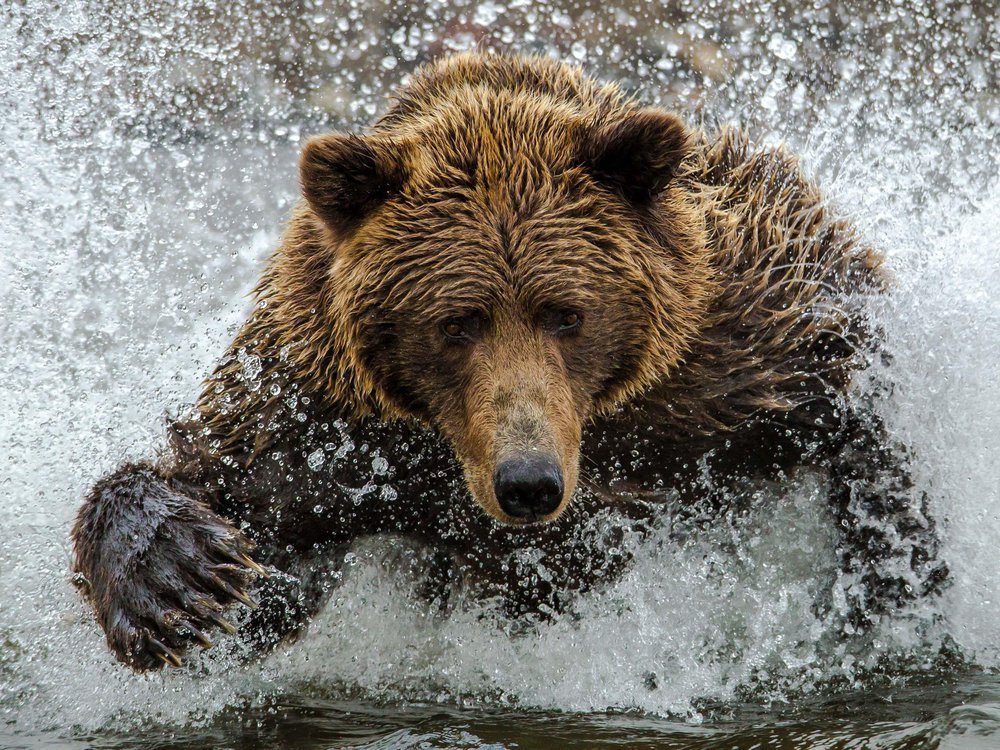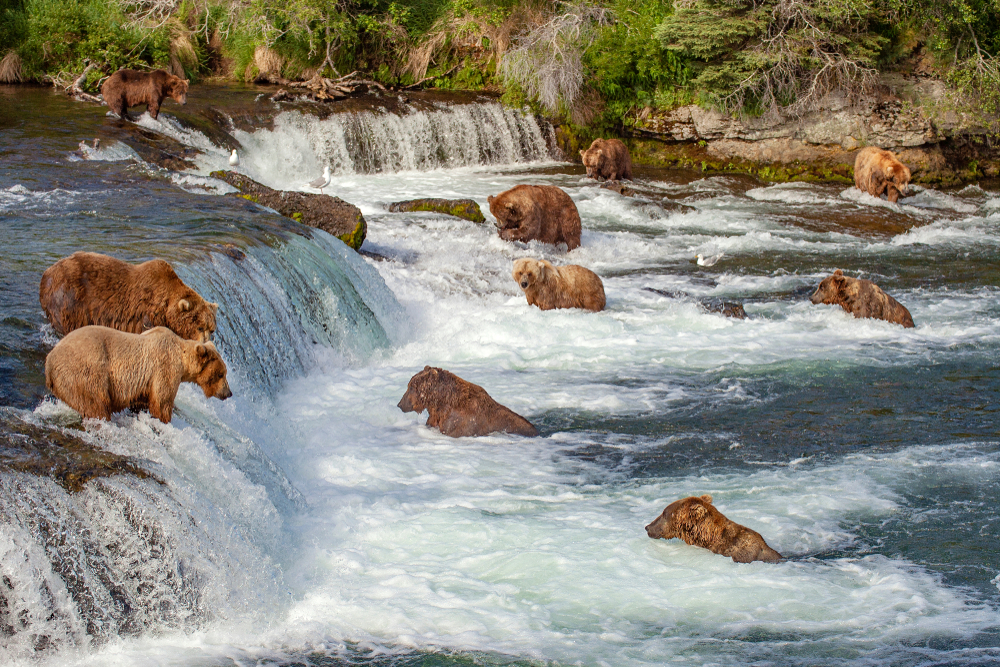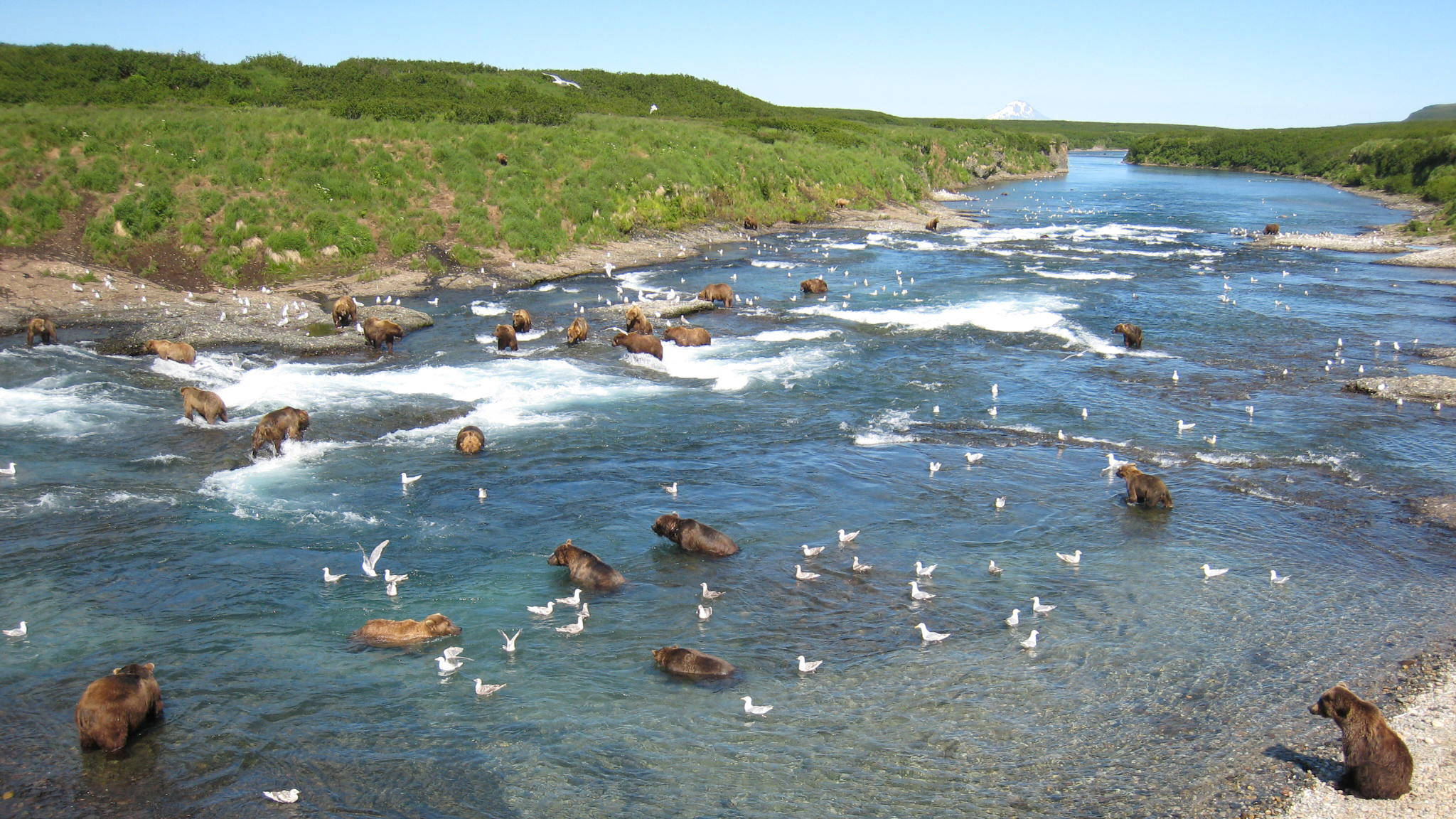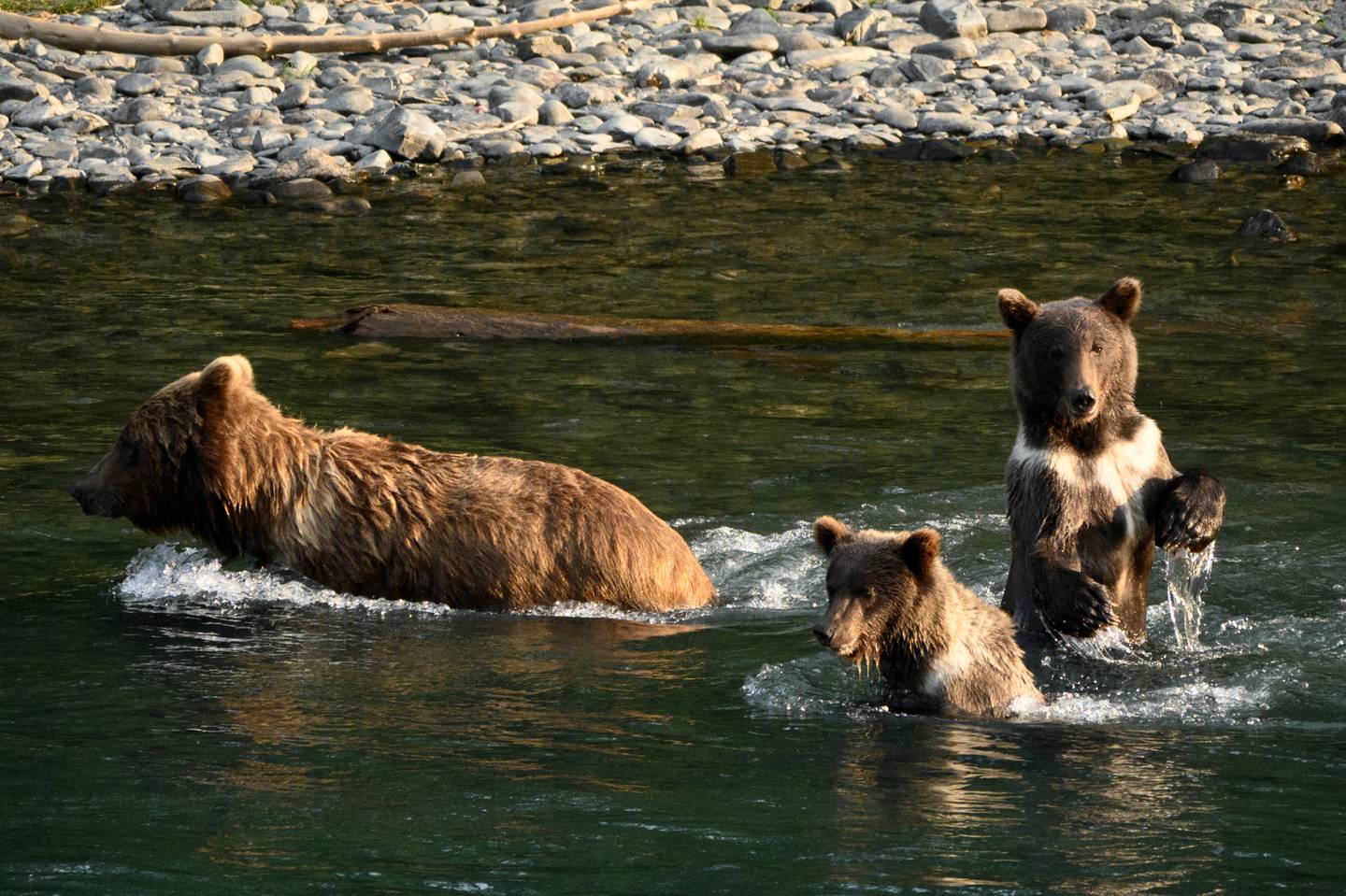Brown Bears Fish For Salmon In Alaska - Amazes Tourists
Brown bears fish for salmon in Alaska and it amazes not only the people in the area but tourists from other places as well. Brown bears in Alaska were once fish hunters who relied on salmon runs to fuel their own and their offspring' tummies. However, as climate change reduces the availability of salmon, this wild population has been forced to adapt in order to live.
Author:Jane RestureMay 28, 202320K Shares872.3K Views

Brown bears fish for salmon in Alaskaand it amazes not only the people in the area but tourists from other places as well. Brown bears in Alaska were once fish hunters who relied on salmon runs to fuel their own and their offspring' tummies. However, as climate change reduces the availability of salmon, this wild population has been forced to adapt in order to live.
During the summer, this includes salmon fishing and eating berries. Brown bears, for example, have been observed catching smelt and other tiny fish in Alaskan streams when they should be eating on salmon carcasses.
The Bears At Brooks River
Because the bears are hungry and their mating season is nearing its climax in late June and July, it's a fantastic time to witness them in action. The bears compete for the finest fishing places as the salmon surge up the falls. The most powerful and successful bears can capture and consume more than 30 fish every day.
The bear cam is operational 24 hours a day, and viewers should keep a look out for bald eagles, gulls, and even the rare wolf feasting on salmon. It also allows visitors to vote for their favorite obese bears as they gain weight during the winter season, as the park has a yearly "fat bear contest." Last year, a new permanent bridge and raised approach boardwalks across Brooks River were completed to make viewing the magnificent animals safer for park visitors and bears alike.
The Bears At McNeil River Falls
Every summer, 60 to 80 brown bears (Ursus arctos) assemble at McNeil River Falls, 320 kilometers southwest of Anchorage on the Alaska Peninsula, to feed on migrating chum salmon (Oncorhyncus keta). Because the falls hamper upstream flow, salmon become vulnerable to bears. As many as 25 bears can fish at the same time, with several of them barely a few meters apart. Every summer, many bears spend more than 30 days at the falls and return year after year. McNeil Falls gives a fantastic chance to study prey-catching behavior and its development in a natural setting since we may monitor so many bears during a fishing season and following seasons.
Salmon fishing on the McNeil River is a bear cultural tradition. Many of the same bears return year after year, and females bring their offspring to keep the tradition going. Some bears made brief appearances, but the majority of the fishing was done by bears who returned each summer. Bears had a broad variety of fishing spots to choose from. It was necessary to find a good area where salmon could be caught profitably. If fishing isn't profitable enough, the omnivorous bears can always go back to eating plants.
The Bears At Kenai River
On fine day, a brown bear sow and three yearlings fished for salmon on the south bank of the Kenai River, watched by careful fishermen downstream and a mob of passers-by across the lake.
Brown bears, particularly females and young bears, frequent the area every year as salmon migrate upstream, according to Jeff Selinger, a regional wildlife management coordinator for the Alaska Department of Fish and Game.
The bear family concentrated their salmon-catching efforts on a river bend approximately a half-mile downstream from the Russian River Ferry crossing. Fisherman attendance was low in the close high-use portion of the river, although several fishermen could be spotted 50 to 75 yards downstream. A fisherman hammered on the hull of an aluminum boat to scare away a cub that was passing the group of six persons along the shoreline.
People Also Ask
Are There Brown Bears In Alaska?
The only places brown bears aren't found in Alaska are the islands south of Frederick Sound in southeast Alaska, the islands west of Unimak in the Aleutian Chain, and the islands in the Bering Sea. Brown bears can be found everywhere else in Alaska.
Are Alaskan Brown Bears The Same As Grizzlies?
Brown bears and grizzly bears belong to the same species, which is known scientifically as Ursus arctos, although grizzly bears are currently regarded as their own distinct subspecies (U. a. horribilis). Kodiak bears are recognized as a separate subspecies of brown bears due to the fact that their physical characteristics distinguish them from other brown bears.
What Are Brown Bears Called In Alaska?
Bears that are referred to as "grizzly" are actually brown bears; however, because they live in environments such as mountain slopes, tundra plains, and inland woods, they are often much smaller than coastal bears.
Conclusion
Alaska's brown bears once hunted salmon to sustain themselves and their cubs. As climate change reduces salmon availability, wild populations must adapt to survive. Summertime activities include salmon fishing and berry picking. Brown bears have been recorded eating smelt and other tiny fish in Alaskan streams instead of salmon carcasses.

Jane Resture
Author
Since she embarked on her first world trip in 2002, Jane Resture spent the past decades sharing her personal journey and travel tips with people around the world. She has traveled to over 80 countries and territories, where she experienced other cultures, wildlife she had only read about in books, new foods, new people, and new amazing experiences.
Jane believes that travel is for everyone and it helps us learn about ourselves and the world around us. Her goal is to help more people from more backgrounds experience the joy of exploration because she trusts that travel opens the door to the greatest, most unforgettable experiences life can offer and this builds a kinder, more inclusive, more open-minded world.
Latest Articles
Popular Articles


